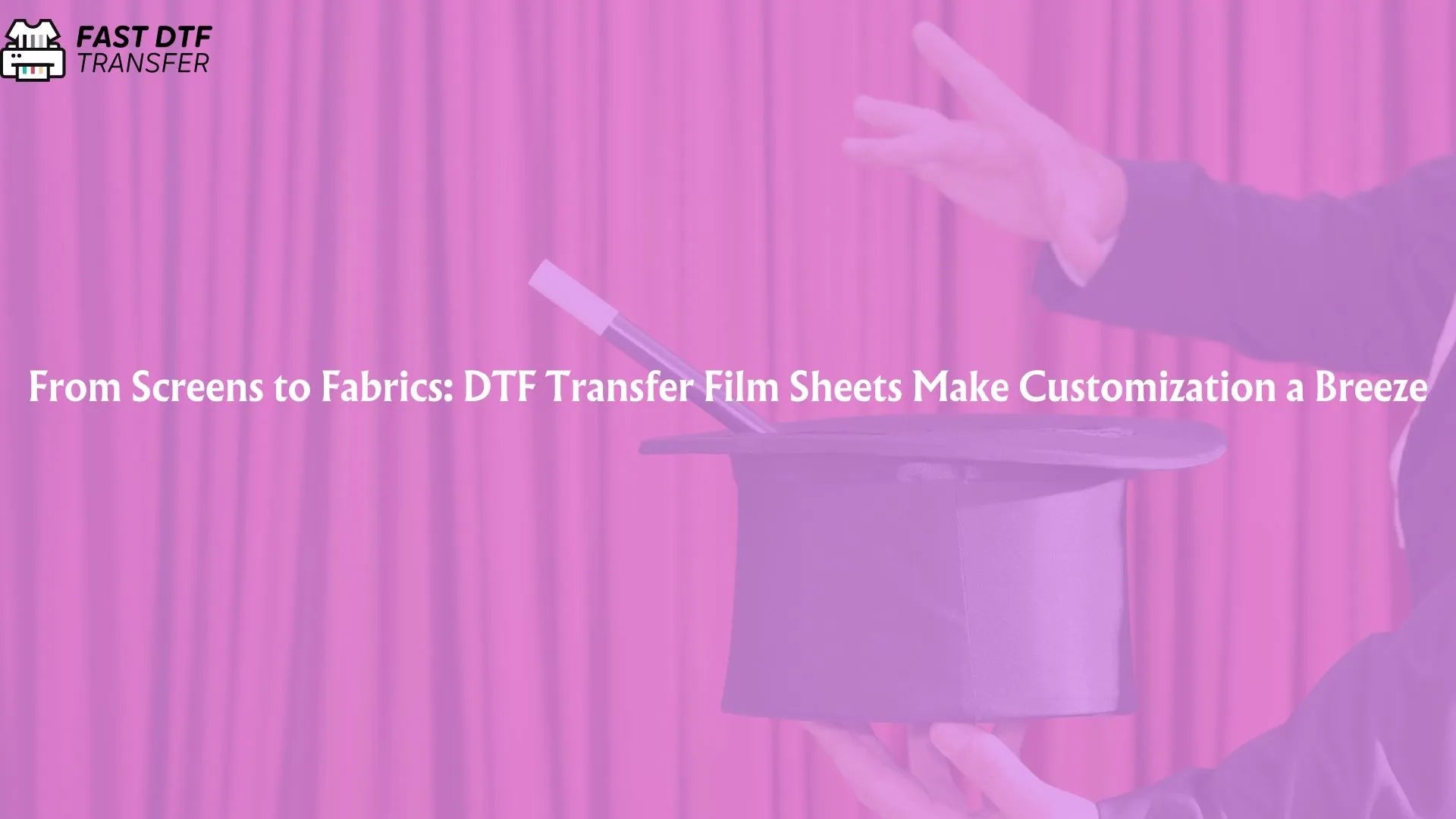
DTF Transfer Film: Transform Your Designs into Durable, Washable Prints That Last

DTF Transfer Film: Transform Your Designs into Durable, Washable Prints That Last
In the world of custom apparel and product printing, one thing is essential: durability. Whether you're creating t-shirts for a small business or custom gifts for family and friends, you want your designs to stand out—and stay vibrant—for a long time. This is where DTF (Direct to Film) transfer film comes in. It has quickly become a go-to solution for transforming your creative designs into high-quality, durable prints that last, even after many washes.
In this blog, we’ll take a closer look at DTF transfer film, how it works, and why it's an ideal choice for long-lasting custom designs.
What Is DTF Transfer Film?
DTF transfer film is a specialized film used in the Direct to Film printing process. This technique involves printing your design onto the transfer film with a DTF printer. Once printed, an adhesive powder is applied to the design, which helps the ink bond to the fabric during the heat press process. The final result is a vibrant, detailed design that adheres well to various fabrics and materials.
Unlike traditional methods like screen printing or vinyl transfers, DTF transfers offer full-color designs with intricate details, making it perfect for printing logos, images, or text on custom apparel and products.
Why DTF Is the Key to Durable Prints
There are several reasons why DTF is gaining popularity among custom apparel makers, small businesses, and DIY enthusiasts:
1. Vibrant, Full-Color Prints
DTF supports full-color printing, which allows you to create detailed, high-quality designs with rich colors and gradients. Whether you're printing logos, artwork, or even photographs, DTF ensures that your designs stand out with clarity and vibrancy. This is perfect for designs that need to capture intricate details that other methods might struggle with.
2. Long-Lasting Durability
One of the standout features of DTF is its exceptional durability. Once the design is transferred to the fabric using heat, it bonds securely, ensuring the print remains vibrant even after multiple washes. Unlike vinyl or screen printing that can fade, peel, or crack over time, DTF prints are known for their ability to retain their quality, making them ideal for apparel that will see regular use.
3. Washable and Fade-Resistant
Another benefit of DTF is that the prints are washable and fade-resistant. Whether it's a t-shirt, hoodie, or custom bag, the design will stay intact even after many washes. This feature makes DTF transfers the ideal choice for creating merchandise that customers will want to wear again and again without worrying about the print fading or peeling off.
4. Versatility Across Materials
DTF is incredibly versatile. It works on a wide range of materials, including cotton, polyester, blends, and more. Whether you're making custom t-shirts, sweatshirts, bags, or even promotional products, DTF printing ensures that you can transfer vibrant designs to many different fabrics and items. It’s perfect for everything from soft cotton t-shirts to synthetic materials like polyester and nylon.
5. Simple Process, Minimal Setup
The DTF process is straightforward and requires minimal setup. You only need a DTF printer, special transfer film, adhesive powder, and a heat press machine. There's no need for the complex and expensive setup that screen printing requires. The process is simple, cost-effective, and perfect for small businesses or those just starting in the custom apparel world.
How Does DTF Work?
The DTF printing process is easy to follow and produces high-quality results. Here’s a step-by-step guide to how it works:
-
Design Creation: First, create your design using graphic design software. Since DTF transfers support full-color printing, you have the freedom to use intricate details, gradients, and multiple colors.
-
Printing the Design: Once your design is ready, it’s printed onto the special DTF transfer film using a DTF printer. This printer uses high-quality inks to ensure the design is vibrant and accurate.
-
Applying Adhesive Powder: After the design is printed, an adhesive powder is applied to the printed film. The powder helps the ink stay on the film and prepares it for the heat transfer process.
-
Heat Pressing the Design: The printed film with the adhesive is placed on the fabric, and a heat press machine is used to apply heat and pressure. This step transfers the design from the film to the fabric, bonding the ink to the fibers for a long-lasting, durable print.
Applications for DTF
DTF can be used for a variety of applications, including:
- Custom Apparel: T-shirts, hoodies, sweatshirts, and hats with full-color designs.
- Personalized Gifts: Custom mugs, pillows, and bags.
- Promotional Products: Tote bags, aprons, and other giveaways.
- Sports Merchandise: Custom jerseys, team shirts, and fan gear.
Why Choose DTF for Your Custom Designs?
Here are some reasons why DTF is an excellent choice for your custom design needs:
- Durable, long-lasting prints that stay vibrant even after many washes.
- Full-color, high-quality designs with intricate details and gradients.
- Versatile fabric compatibility, ideal for t-shirts, hats, bags, and more.
- Cost-effective setup with no need for expensive screens or complicated processes.
- Quick production turnaround, perfect for small or large print runs.
Conclusion
If you're looking for a reliable, cost-effective way to create vibrant, durable prints for custom apparel and products, DTF is the solution. Whether you're a small business owner, a hobbyist, or a designer, DTF printing allows you to create professional-quality designs that last. The ability to print full-color designs on a variety of materials with minimal setup makes DTF the ideal choice for creating custom items that will stand the test of time.
Check Out Our Other Products
More information


Leave a comment
This site is protected by hCaptcha and the hCaptcha Privacy Policy and Terms of Service apply.